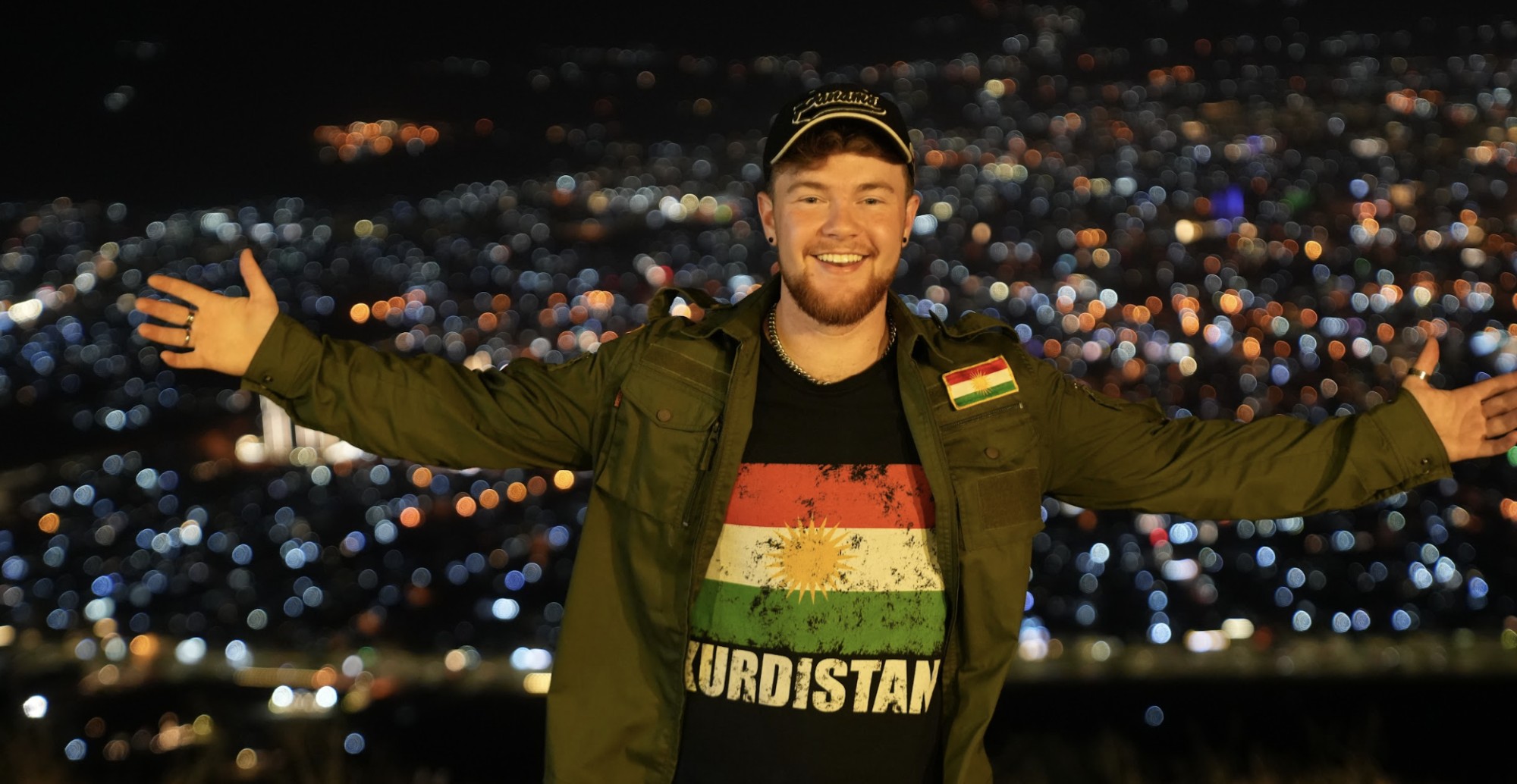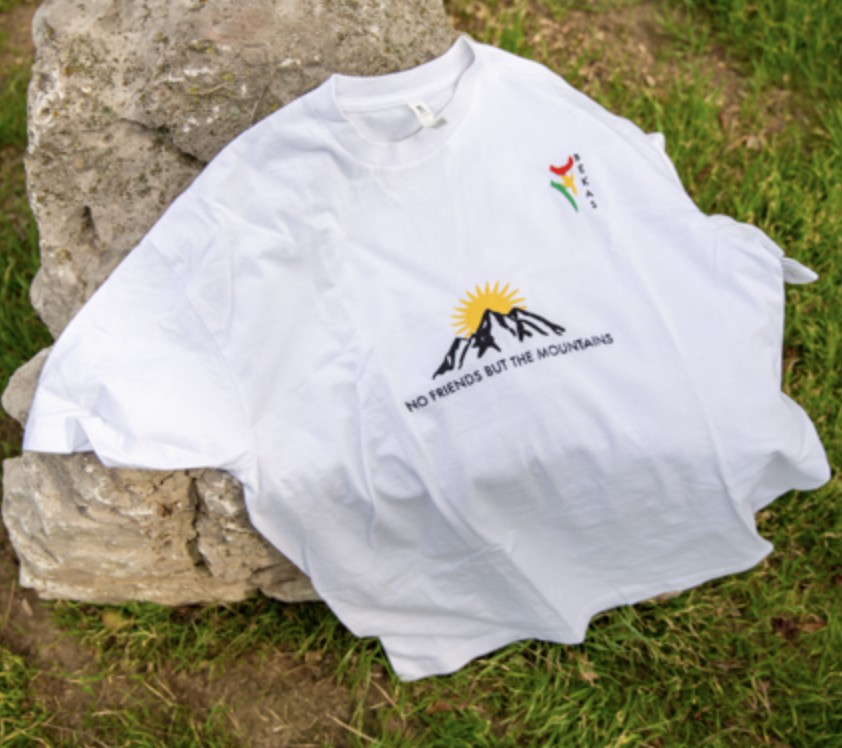A rock is a natural body, a hardened non-metallic mass made up of one or more minerals and found in many places. Throughout history, people have used stones for various uses, with some holding greater significance than others. However, there is one stone that reveals its hidden legend every May, known as the “Komsay stone.” Each year in the mountainous region of Hawraman in Rojhilat or Eastern Kurdistan (northwestern Iran), the Komsay ceremony is held after the session of the parliament of Pir Shalyar in mid-spring. This cultural event is considered the second part of the Pir Shalyar festival, encompassing both cultural and religious aspects. It attracts between 20,000 and 25,000 attendees annually.
Pir Shalyar was a famous historical figure of the Hawraman region who established the parliament of Pir Shalyar during his time, earning enduring respect from residents. The people of Hawraman celebrate several special occasions and ceremonies in his honor, including the Komsay ceremony, which dates back 909 years. It was established simultaneously with the Pir Shalyar ceremony and complements the annual session of the parliament of Hawraman held in February at the house of Pir Shalyar. The annual Komsay ceremony is organized by members of the parliamentary council of Pir Shalyar.
Komsay consists of two original Hawrami words. The first part, “ko,” means gathering all the lines of Hawraman (Lhon, Zhawaro, and Takht) in one place, and “masai” means learning. Together, they mean “collecting and learning” or “collecting and remembering.”
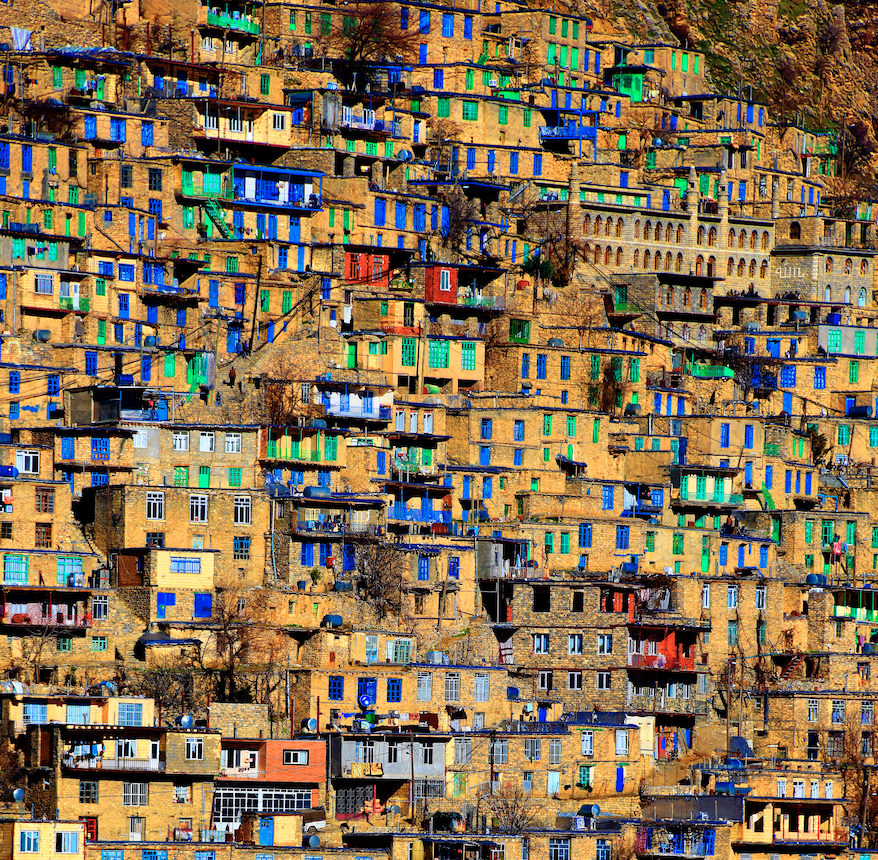
What happens at the Komsay ceremony?
Hawraman boasts thousands of gardens, as gardening is a longstanding tradition in the region. People use some of the produce for their own food and sell a large portion to support their families. Gardens need water to grow, and although there are several springs and water sources in Hawraman, ponds have been built in front of each spring to collect water. These ponds fill with water at night and are used to water the gardens during the day. However, the water is often insufficient for many of the garden owners. To distribute this water fairly, the Komsay ceremony is considered a sacred occasion, a 909-year-old tradition that ensures equal water distribution among garden owners.
The ceremony is held annually by the members of the parliamentary council of Pir Shalyar, with important decisions made in several stages.
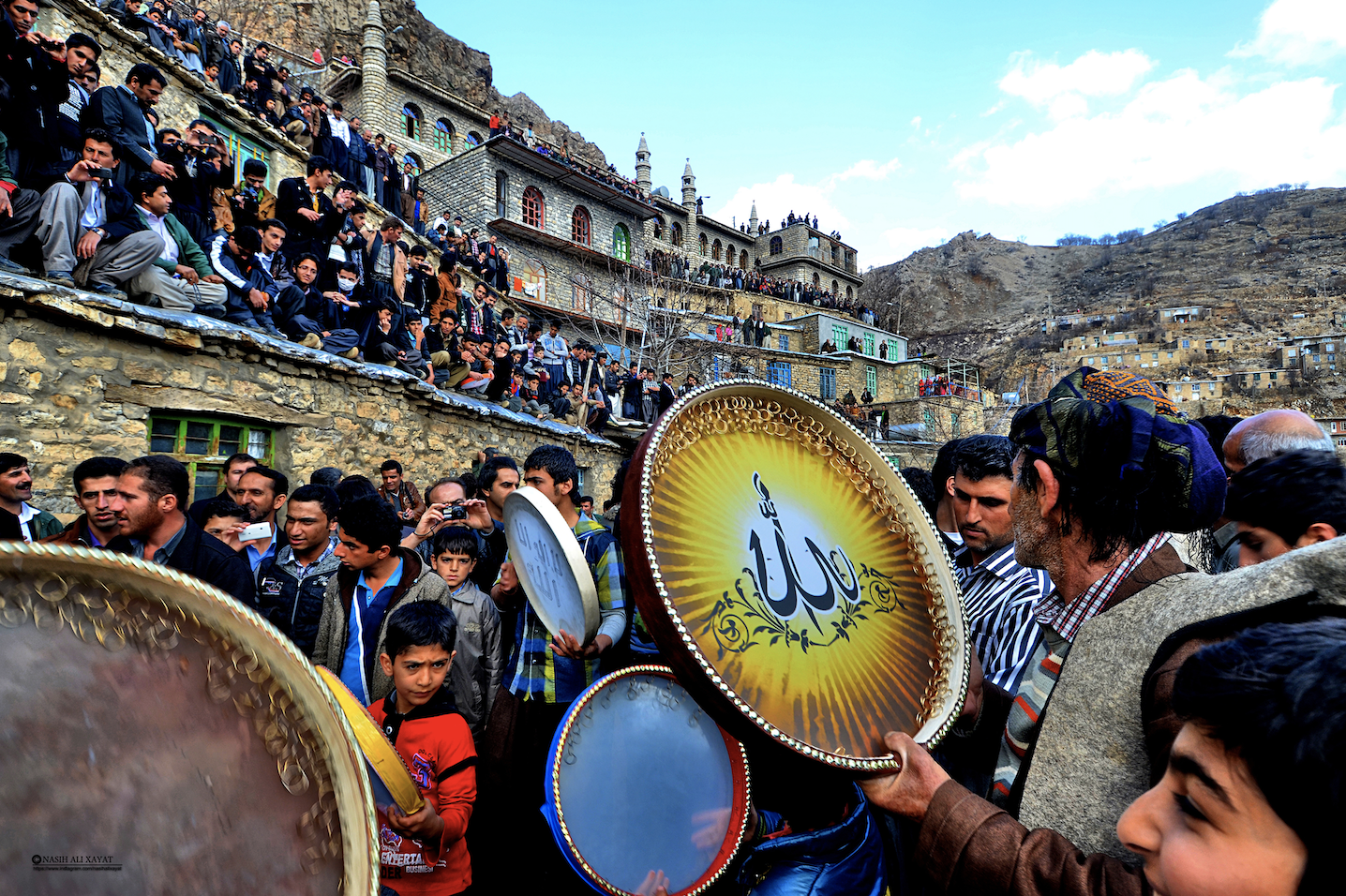
First stage
The Komsay ceremony is held every year on May 5 near the shrine and grave of Pir Shalyar, which is called Sar Qabran (cemetery). Early in the morning, garden owners from all five villages of Hawraman (Kamala, Ruawrre, Chami Waisia, Sari Pir, and Hawraman Takht) gather in the presence of parliamentary members, local and foreign guests, poets, writers, journalists, historians, and media outlets.
Before the ceremony, guests gather in Hawraman to participate in the Komsay ceremony and document the event. The imam of the Hawraman mosque near the shrine of Pir Shalyar delivers a speech on peace and coexistence. Council members, well-versed in the number and sizes of gardens around Hawraman, make crucial decisions for the coming agricultural year. Following the discussion, council members distribute water to the garden owners, determining the time and amount of water for the year, which is different year to year. Once garden owners approve of the distribution plan, the breaking of the Komsay stone begins.

Second stage
Breaking the sacred Komsay stone is a significant part of the ceremony. The stone, measuring 90 cm × 60 cm × 20 cm, is white and is located opposite the shrine of Pir Shalyar in Hawraman.
The stone has three notable specialties:
1. If one or more garden owners disagree on the water distribution method, the stone will not be broken, until everyone agrees.
2. The stone, once broken and fragmented, returns to its original size every year.
3. The stone can only be broken on its designated day.
The Komsay stone has been in the same place for centuries; five years ago, a wall was built around it to prevent its disappearance, preserve its cleanliness, and enhance Hawraman’s appearance. The stone’s enclosure, built with Hawraman stone and cement, measures one meter in height and has a small green iron door, signifying the area’s sacred nature. Visitors tie small pieces of green and white cloth to the door when making a wish.
One person from among the residents of the five villages is assigned the task of breaking the stone each year by the imam of the Hawraman mosque. When the stone is broken, only the designated person enters the area, while everyone else watches from outside. The person easily breaks the stone using a hammer, provided all garden owners agree on their water shares. If there is a lack of agreement, the stone will not be broken. The council members address any disagreements, set a new water distribution schedule, and once approved, the stone-breaking resumes. The broken pieces of the stone are distributed to the audience as mementos.
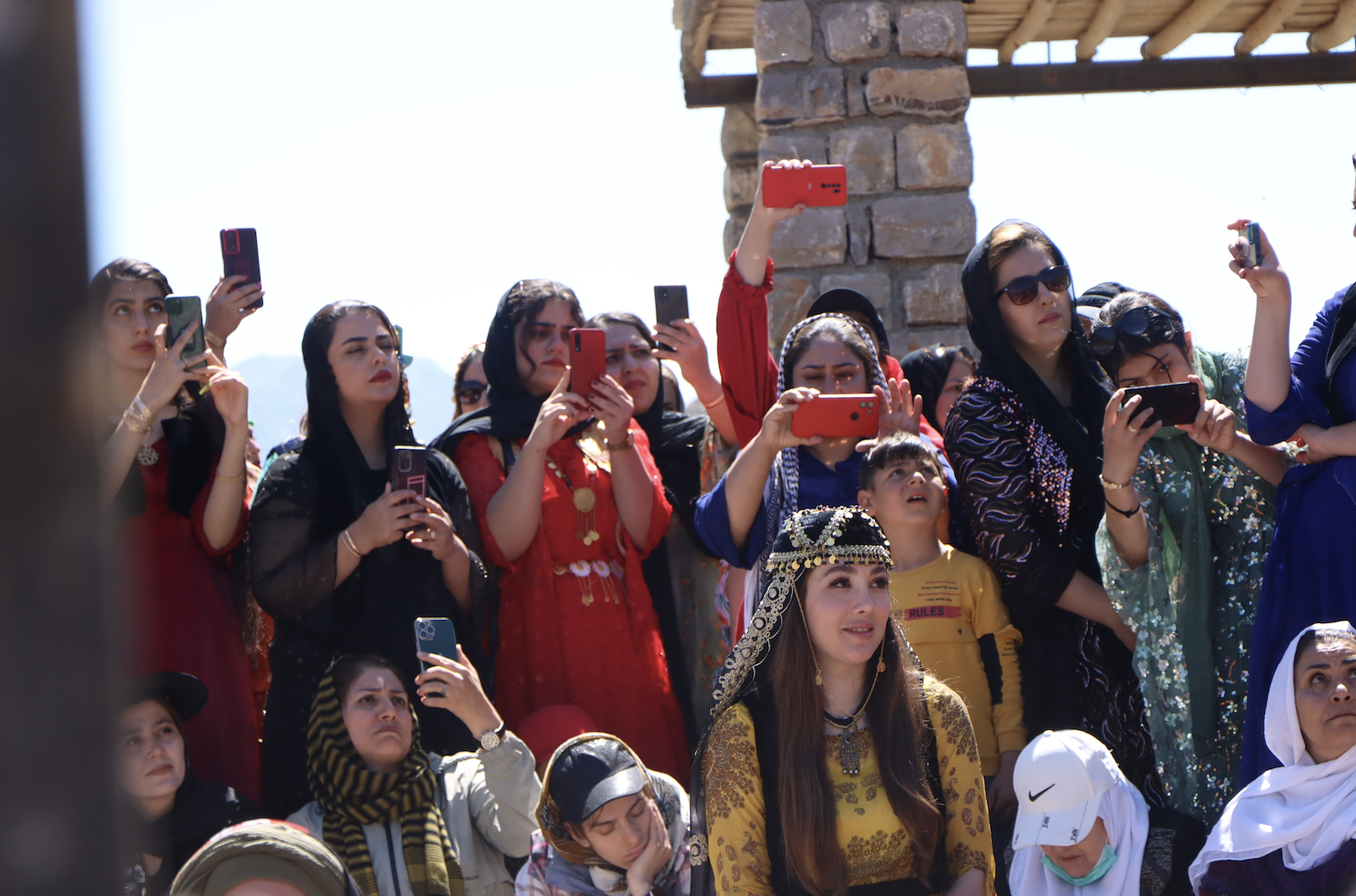
Third stage
On the day of the Komsay ceremony, the same parliamentary session of Pir Shalyar is reenacted in an open circle, informatively and theatrically, to familiarize everyone with the process of council member elections. This performance, called “Zhirla u Mare,” lasts until 1:00 pm. During the ceremony, council members place various dried fruits on stage, a tradition dating back to the Pir Shalyar parliament 909 years ago. Each type of dried fruit represents a candidate. Two weeks before the election, candidates’ campaign, and on election day, the chosen dried fruits are placed in a basket in Pir Shalyar’s house. Young men and women vote by selecting fruits representing their candidates. The speaker, vice speaker, and council members are elected based on the fruit count.
The use of dried fruits has several purposes, including to highlight environmental friendliness and fruit consumption; to showcase Hawraman’s produce and promote fruit exports; to allow guests to taste the fruits, promoting exports through word-of-mouth; and to provide a sacred keepsake for guests.
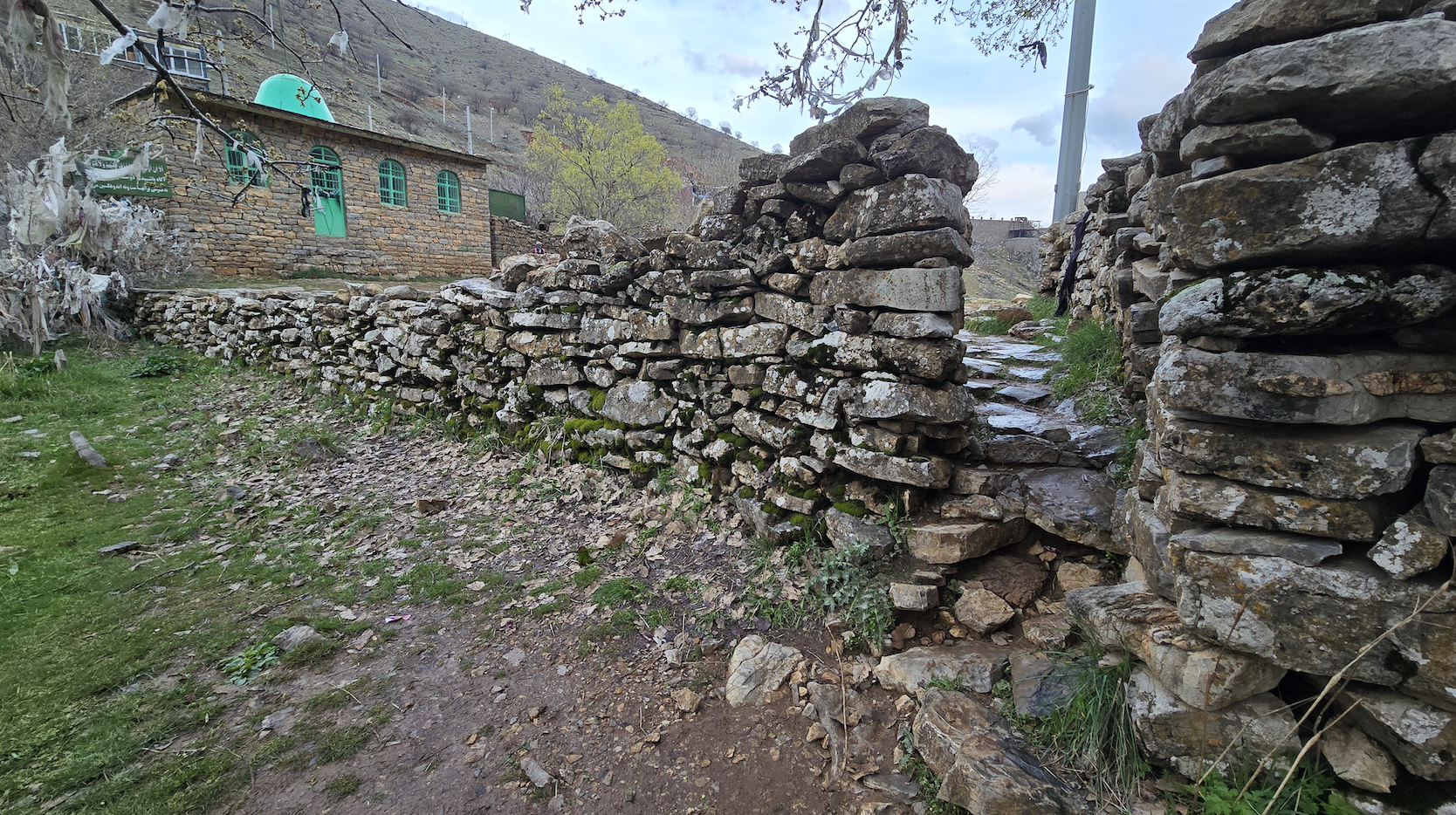
Fourth stage
At lunchtime, participants hold a picnic in the area. Notably, the majority of people eat yaprakh or dolma, stuffed leaves and vegetables from Kurdish cultural cuisine. This tradition is deeply ingrained in Hawraman culture.
Some women monitor the ceremony as spectators, while others display and sell their handicrafts, such as necklaces, shawls, carpets, hats, and baskets, to tourists. This practice, originating from Pir Shalyar’s time, aims to make Hawraman a tourist and commercial hub, particularly during ceremonies, when the number of tourists is high.

Fifth stage
After lunch, the ceremony concludes with a celebration, where singers, def (a large frame drum) players, and poets perform in both the Sorani and Hawrami Kurdish dialects. The audience, dressed in traditional Kurdish outfits, participate in dancing and celebrating. This celebration aims to introduce Kurdish culture to foreign audiences and provide a platform for emerging artists.
To learn more about the ceremony and celebration, one can consult a yet-to-be released documentary film by Nasih Ali Xayat, a Kurdish photographer who has attended the Komsay ceremony annually for over 10 years. Drawn to it on his first visit, he has captured thousands of color photos and videos that were used to create the short documentary film titled Komsay. Xayat’s film is part of his larger work, which aims to document Kurdish history and promote Kurdish culture through social media and other platforms.
Fatmah Qasim Habib is a journalist, artist, translator, writer, poet, and art designer who has organized numerous art exhibitions in both the Kurdistan Region and abroad.
